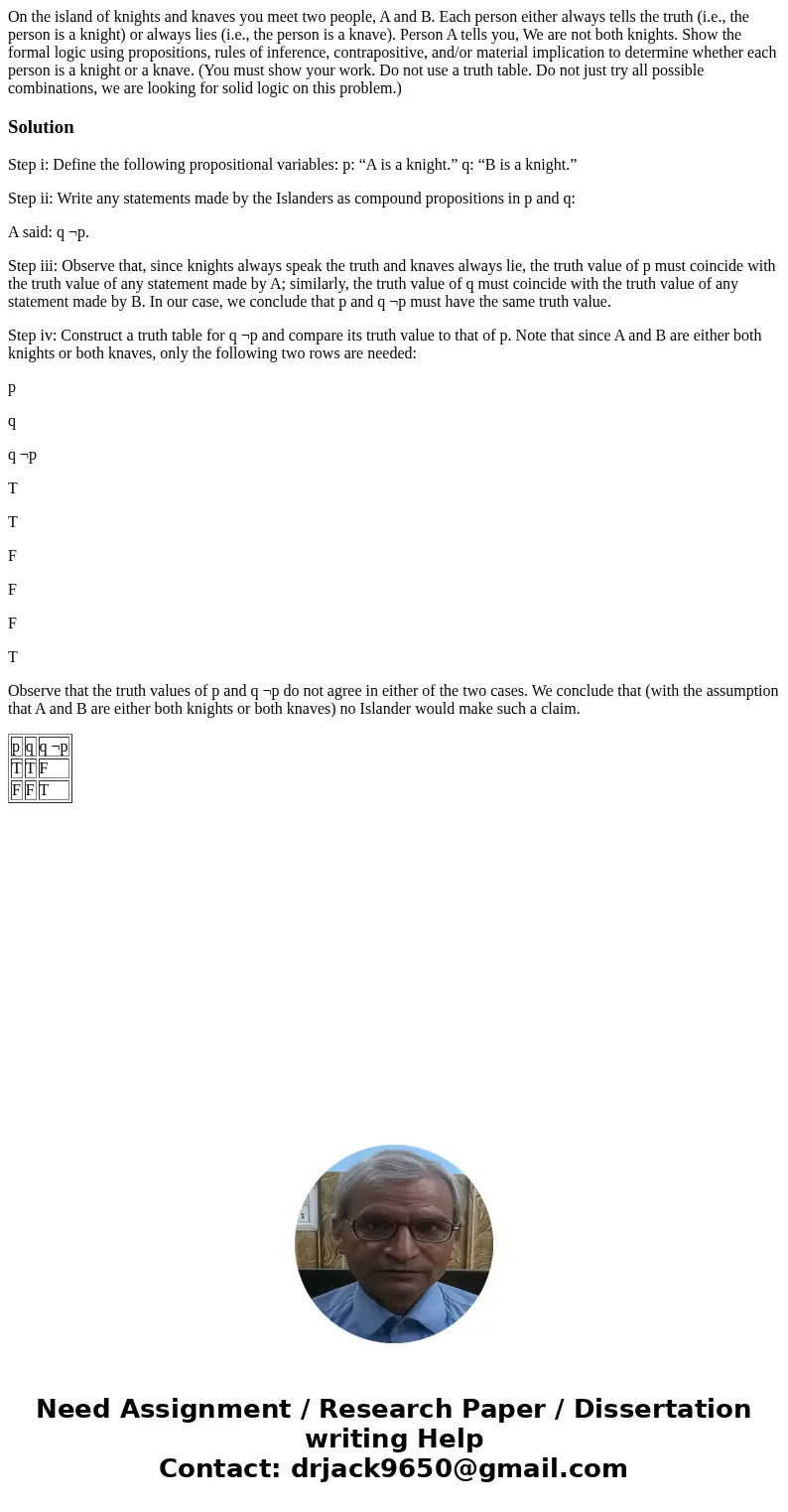On the island of knights and knaves you meet two people A an
On the island of knights and knaves you meet two people, A and B. Each person either always tells the truth (i.e., the person is a knight) or always lies (i.e., the person is a knave). Person A tells you, We are not both knights. Show the formal logic using propositions, rules of inference, contrapositive, and/or material implication to determine whether each person is a knight or a knave. (You must show your work. Do not use a truth table. Do not just try all possible combinations, we are looking for solid logic on this problem.)
Solution
Step i: Define the following propositional variables: p: “A is a knight.” q: “B is a knight.”
Step ii: Write any statements made by the Islanders as compound propositions in p and q:
A said: q ¬p.
Step iii: Observe that, since knights always speak the truth and knaves always lie, the truth value of p must coincide with the truth value of any statement made by A; similarly, the truth value of q must coincide with the truth value of any statement made by B. In our case, we conclude that p and q ¬p must have the same truth value.
Step iv: Construct a truth table for q ¬p and compare its truth value to that of p. Note that since A and B are either both knights or both knaves, only the following two rows are needed:
p
q
q ¬p
T
T
F
F
F
T
Observe that the truth values of p and q ¬p do not agree in either of the two cases. We conclude that (with the assumption that A and B are either both knights or both knaves) no Islander would make such a claim.
| p | q | q ¬p |
| T | T | F |
| F | F | T |

 Homework Sourse
Homework Sourse